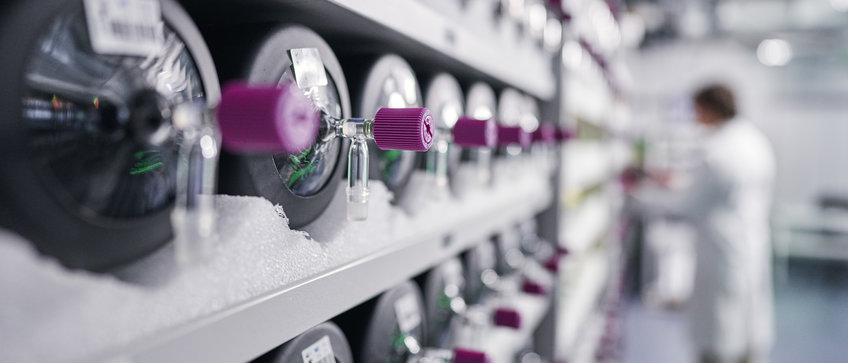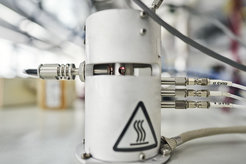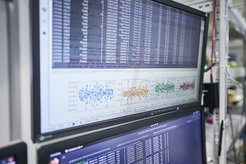
Measurement of trace gas concentrations
In the laboratory, we measure the following greenhouse and other trace gases in flask air samples:
CO2, CH4, CO (each for quality control of continuous measurements at stations), as well as N2O (third most important long-lived greenhouse gas) , as well as N2O (third most important long-lived greenhouse gas), SF6 (long-lived industrial gas indicating the origin of air masses from industrialized areas), and hydrogen.
The demand on the accuracy of the measurements is very high, because the signals are very small. Even small relative concentration changes may indicate systematic changes of greenhouse gas sources or sinks or may have been caused by special events (e.g. COVID19 lockdown, large-scale forest fires, particular climatic conditions in a specific season).
Measuring method

Gas chromatography is a technique in which a mixture of substances (e.g. air) is transported by a gas stream through a long tube filled with a material to which different components adsorb to varying degrees. In this way, individual components from the air leave this separation unit separated from other interfering components after a certain time and produce a physically measurable signal in a detector. This signal is proportional to the concentration of this component. Specific, highly sensitive detection principles are suitable for different trace gases. For the trace gases we analyze the following detectzors are employed:
- Flame Ionization Detector (FID) for CH4 and CO2 (after prior reduction to CH4)
- Electron capture detector (ECD) for N2O and SF6
- HgO-Reduction gas detector (RGD) for CO and H2
- Pulsed Discharge Detector (PDD) for H2
Only a limited volume of air is available to perform all analyses. A single gas chromatographic analysis of the concentrations of all gases requires approximately 100 ml of sample volume. Typically, 3-5 replicate measurements are performed to reduce measurement uncertainty.
Calibration

The detection principles generally result in a very small electrical signal that is measured precisely. An essential part of the measurement is the accurate determination of the correlation between the amount of analyte and the size of the signal. For this purpose, comparative measurements of reference gases of known composition and samples are performed. The accuracy of the knowledge of the gas concentration in these reference gases is one of the main limitations of the measurement accuracy. However, perfect accuracy of absolute concentration values is not crucial for most scientific questions - what is more important is that all measurement data of a measurement network are consistent to a very high degree within themselves, between different global measurement networks and over many decades. This is achieved by having a Central Calibration Laboratory worldwide that is authorized by the World Meteorological Organization (WMO). The CCL ensures that all measurements can be traced back to the basic physical units of the International System of Units (SI). The link to this SI system is achieved by primary reference materials on whose accurately determined concentration values all measurements in the WMO Global Atmosphere Watch program are based. These reference standards cover a concentration range that includes the typical atmospheric abundance of the respective trace gas and are referred to as the calibration scale. Advances in instrument technology, findings of small changes in these primary reference standards, or perturbations from other components can result in the need for the WMO-CCL to make corrections to the concentration data from these primary standards. The concentration data valid at different times are distinguished from each other by the scale version name.

